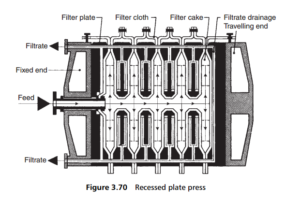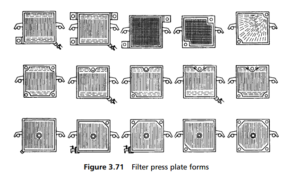0
-
An empty cart
You have no item in your shopping cart
envato-wordpress-toolkit domain was triggered too early. This is usually an indicator for some code in the plugin or theme running too early. Translations should be loaded at the init action or later. Please see Debugging in WordPress for more information. (This message was added in version 6.7.0.) in /var/www/wp-includes/functions.php on line 6121g5plus-darna domain was triggered too early. This is usually an indicator for some code in the plugin or theme running too early. Translations should be loaded at the init action or later. Please see Debugging in WordPress for more information. (This message was added in version 6.7.0.) in /var/www/wp-includes/functions.php on line 6121The first main development from the basic plate and frame structure saw the alternating plate and frame replaced by a single set of plates, each two sided, with a raised collar around its periphery, called a recessed plate. Now, when adjacent
plates are closed up together, a chamber is formed from the two facing recesses to create the recessed plate press (also called the chamber press), a major part of the filter press market, having largely replaced the plate and frame press, not least
because higher filtration pressures are possible with the recessed plate press.
The sheets of filter media are fixed to the faces of the plates, so that when they are closed up, the pieces of medium butt up to one another ( Figure 3.70). Now the slurry is fed into the small gap between the sheets of medium, and filtrate flows through the media into the recesses behind them, through the drainage spaces on the surface of the plates, and away to the filtrate discharge port. The filtered solids are left in the space between the sheets of filter media, which slowly expands, under the fluid pressure and as it fills with cake, into the recesses on either side, until the media sit on the raised parts of the plates. The resultant stretching and relaxing of the filter media during each cycle of filtration gives a shorter medium life for the recessed plate filter, to offset against its simpler design and lower first cost.

Operation of the recessed plate filter is much the same as that described above for the plate and frame filter. Some degree of mechanization of the solid discharge process has been achieved, leading to a measure of automation in the operation of a
recessed plate filter press.
Working pressures for filter presses are upwards of 7 bar. Plates, originally of wood, are now made from a variety of materials, including rubber-lined steel and moulded plastic. They are available in a range of sizes, from 15cm square, up to
2 m square, and they are installed up to 100 or more in one filter press.
The plates are normally square in shape, with delivery and offtake ports in the centre, and/or at the corners ( Figure 3.71). This gives the chance to have the feed

point at the centre or at the top, as well as at the base – from which the slurry will rise to fill each compartment (there usually being some problems with cake distribution across the area of the plate). Feed from two points is also possible to alleviate the distribution problem.
Not only does the filter medium act in its separative function, but it also provides the seal between plates – not just at the outer edges, but also around every port. The sheets of media must therefore be made to quite strict tolerances, from material that will not change in shape with continued use. Nevertheless, leakage from the joints is a common problem with the filter press, because the material forming the sealing gasket is part of the filter medium, and therefore intrinsically porous – a problem that can be solved by using filter media that have been coated with elastomeric materials around the required sealing areas.
It is possible that the filtration cycle should be stopped short of maximum cake thickness, since the pressure starts to increase well before that point, and filtrate rate may fall to an unacceptable level. The question of optimum cake thickness is an important parameter in filter press design. The plate and frame and recessed plate presses do not allow much freedom to vary cake thickness, very much decided by the width of the recess, should a very dry cake be required.